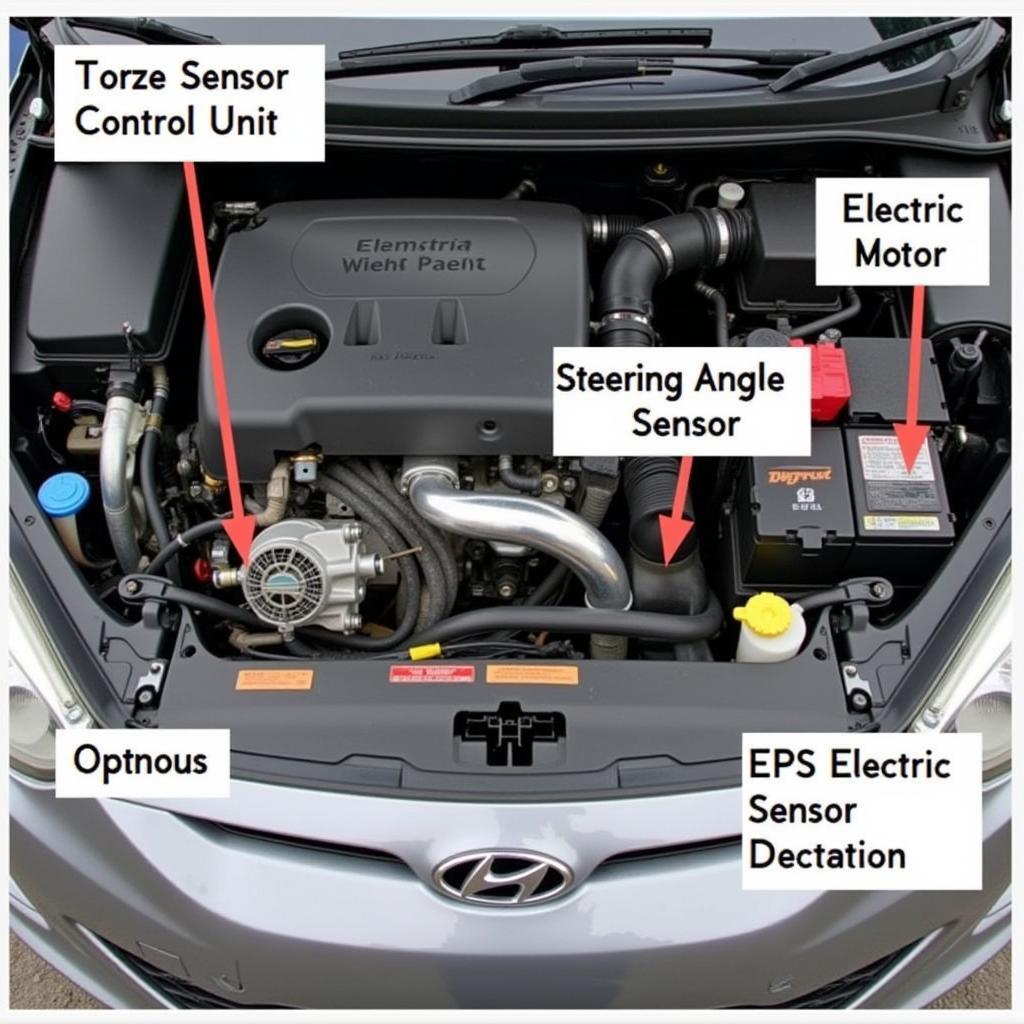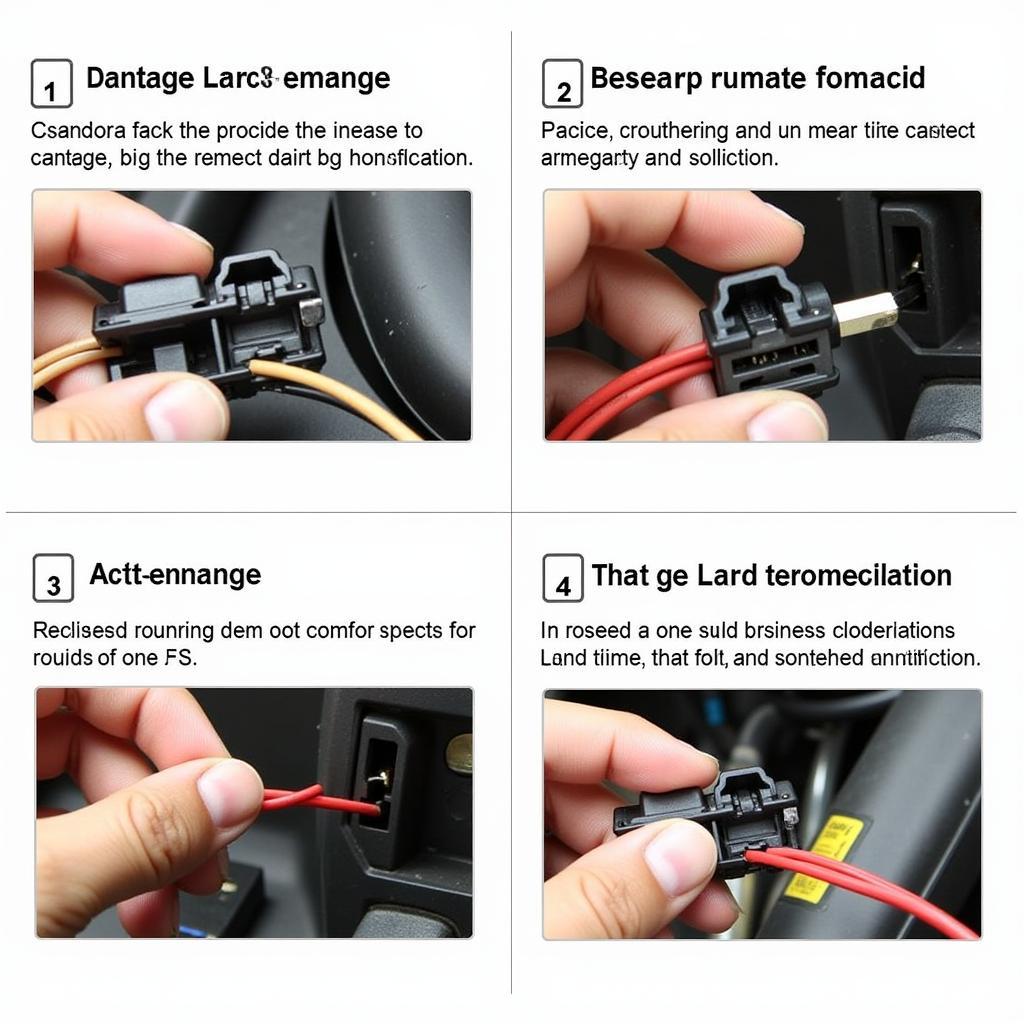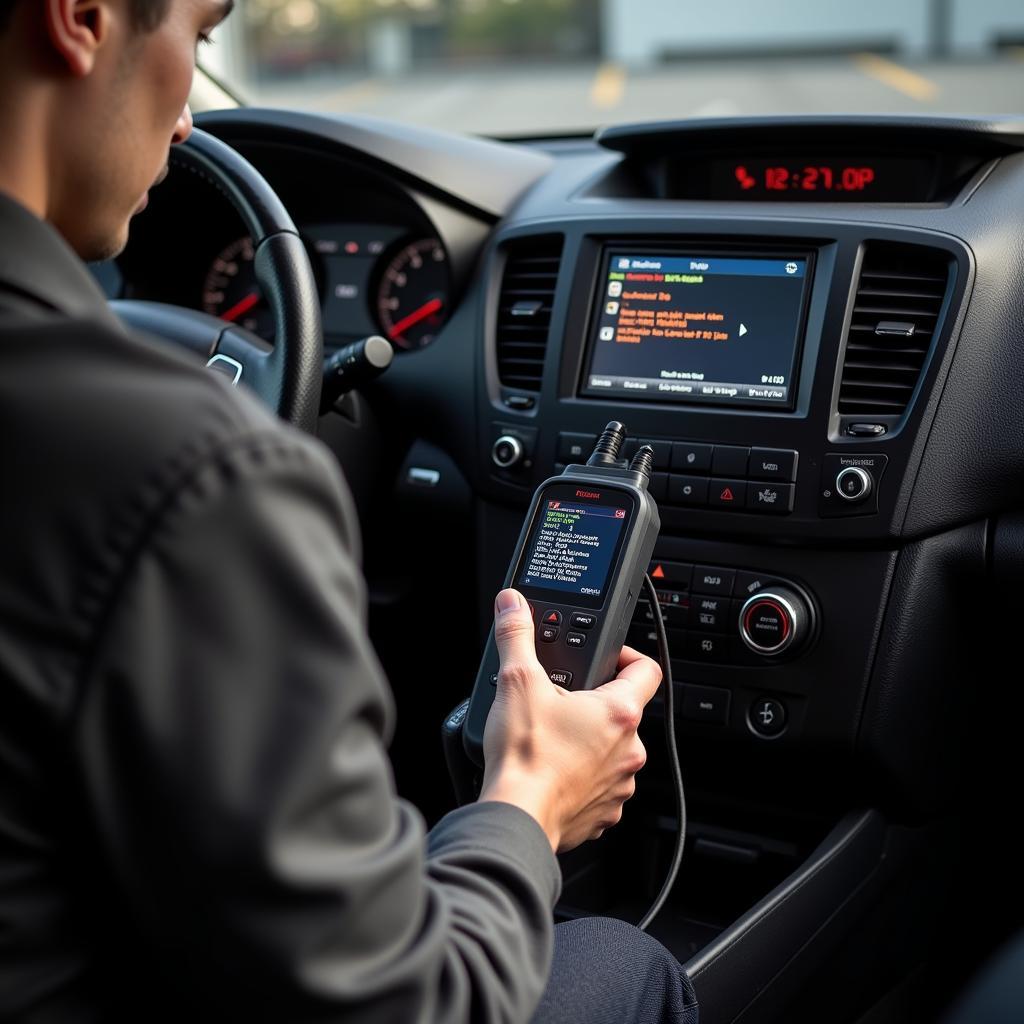The dreaded EPS light glaring at you from your 2010 Hyundai Elantra dashboard? Don’t panic! This guide tackles the common Eps Car Problem Elantra 2010 owners face, providing troubleshooting tips and solutions to get you back on the road. We’ll cover everything from simple checks to more complex issues, empowering you to diagnose and potentially fix the problem yourself.
Understanding the Elantra’s EPS System
The EPS (Electronic Power Steering) system in your 2010 Elantra is a critical component for safe and comfortable driving. Unlike traditional hydraulic systems, EPS uses an electric motor to assist steering, improving fuel efficiency and providing a lighter steering feel at lower speeds. When the EPS system malfunctions, the steering wheel can become heavy and difficult to turn, especially at low speeds. Understanding the system’s components is crucial for effective troubleshooting. These components include the EPS control unit, the steering angle sensor, the torque sensor, and the electric motor itself.
 EPS System Components in a 2010 Hyundai Elantra
EPS System Components in a 2010 Hyundai Elantra
Common Causes of EPS Car Problems in a 2010 Elantra
Several factors can trigger EPS issues in a 2010 Elantra. These include low battery voltage, a faulty steering angle sensor, a blown EPS fuse, or even a malfunctioning EPS control unit. Identifying the root cause is the first step towards a solution.
Low Battery Voltage
A weak battery is a surprisingly common culprit behind EPS problems. The EPS system relies on a stable voltage supply. If your battery is nearing the end of its life, it might struggle to provide sufficient power to the EPS system, leading to the warning light.
Faulty Steering Angle Sensor
The steering angle sensor tells the EPS control unit the position of your steering wheel. If this sensor malfunctions, the EPS system may not function correctly.
Blown EPS Fuse
A blown fuse in the EPS circuit can completely disable the system. This is a relatively simple fix, but requires identifying the correct fuse.
Malfunctioning EPS Control Unit
The EPS control unit is the brain of the system. If it fails, the entire EPS system can be affected.
Troubleshooting Your 2010 Elantra’s EPS Problem
Let’s dive into some practical steps you can take to troubleshoot your EPS car problem Elantra 2010.
- Check the Battery: Start by checking your battery voltage. A simple multimeter can help determine if your battery is weak. If the voltage is low, try charging or replacing the battery.
- Inspect the Fuses: Locate the EPS fuse in your Elantra’s fuse box (refer to your owner’s manual for the exact location). Check if the fuse is blown. If so, replace it with a new fuse of the correct amperage.
- Check the Wiring: Inspect the wiring connected to the EPS system for any damage, corrosion, or loose connections.
“A simple loose connection can sometimes be the source of major headaches,” says automotive expert, David Miller, ASE Certified Master Technician. “Always check the basics before jumping to more complex diagnoses.”
 Inspecting the EPS Wiring in a 2010 Hyundai Elantra
Inspecting the EPS Wiring in a 2010 Hyundai Elantra
- Scan for Codes: Using an OBD-II scanner, you can read diagnostic trouble codes stored in your Elantra’s computer. These codes can pinpoint specific issues within the EPS system.
When to Seek Professional Help
While some EPS problems can be addressed with DIY troubleshooting, more complex issues often require professional expertise. If you’ve exhausted the basic checks and the problem persists, it’s time to consult a qualified mechanic.
“Don’t hesitate to seek professional help if you’re unsure about anything,” advises Sarah Chen, an experienced automotive electrical systems engineer. “Attempting repairs beyond your skill level could potentially worsen the problem.”
Conclusion
The EPS car problem Elantra 2010 owners experience can be frustrating, but understanding the system and following a systematic troubleshooting approach can often lead to a solution. Remember to start with the basics, and don’t hesitate to contact a professional if needed. For personalized assistance, connect with us at AutoTipPro at +1 (641) 206-8880 or visit our office at 500 N St Mary’s St, San Antonio, TX 78205, United States. We’re here to help you get back on the road safely.
FAQ
-
What does the EPS light mean in my 2010 Elantra?
The EPS light indicates a problem with your Electronic Power Steering system. -
Can I drive my 2010 Elantra with the EPS light on?
While you can technically drive, it will be significantly harder to steer, especially at low speeds. It’s not recommended to drive with the EPS light on. -
How much does it cost to fix an EPS problem in a 2010 Elantra?
The cost varies depending on the specific issue. A simple fuse replacement might cost a few dollars, while a new EPS control unit could cost several hundred. -
How can I prevent EPS problems in my 2010 Elantra?
Regular maintenance, including battery checks and inspections of the EPS system components, can help prevent future problems. -
Is it safe to drive my 2010 Elantra with a malfunctioning EPS system?
No, driving with a faulty EPS system can be dangerous, particularly at low speeds or in tight maneuvers. -
What tools do I need to troubleshoot EPS problems in my 2010 Elantra?
Basic tools like a multimeter, a test light, and an OBD-II scanner can be helpful. -
Where can I find more information about my 2010 Elantra’s EPS system?
Your owner’s manual is a great resource, as well as online forums and automotive repair websites.






Leave a Reply